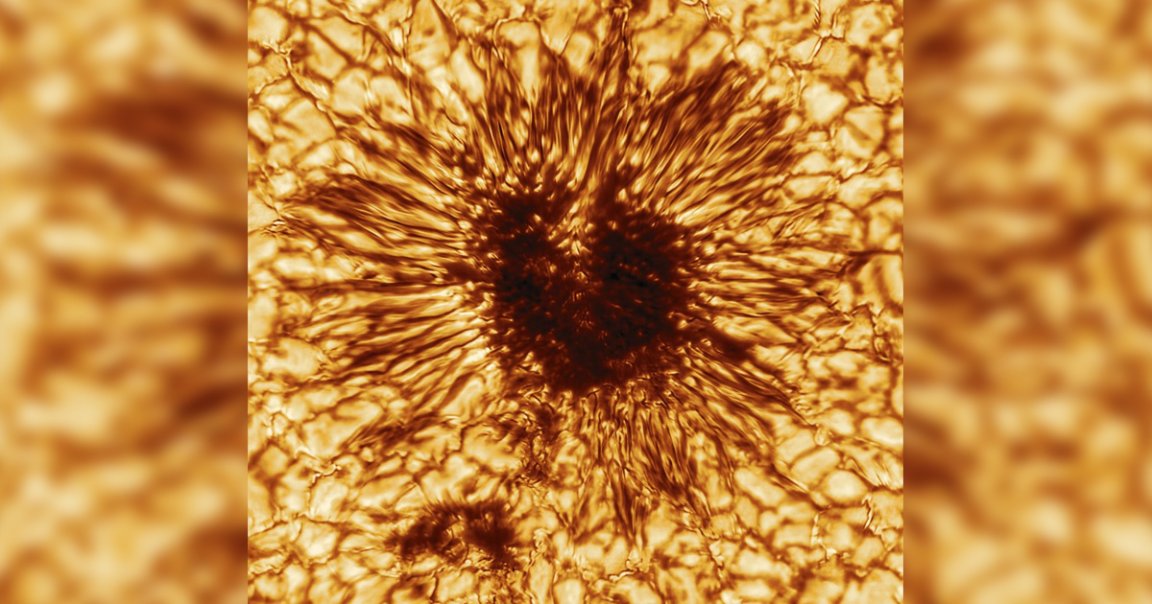
The US National Science Foundation’s Daniel K. Inouye Solar Telescope, the largest solar observatory in the world, just released its first-ever image of a sunspot.
The image, taken in January 2020, is the sharpest image of a sunspot in history — and it looks absolutely terrifying.
“The sunspot image achieves a spatial resolution about 2.5 times higher than ever previously achieved, showing magnetic structures as small as 20 kilometers on the surface of the sun,” associate director at NSF’s National Solar Observatory Thomas Rimmele, lead author of the corresponding paper published in the journal Solar Physics, said in a statement.
A sunspot is a dark area on the Sun’s surface. Scientists suspected that they’re caused by magnetic field flux which cause surrounding areas to cool temporarily.
Their size can be extraordinary. The new Inouye image, for instance, is 10,000 miles across — large enough to fit the entire Earth comfortably inside it.
The image shows hot and cool gas emanating from the dark center while hot gases bubble up from below the surface. Despite being relatively cool, the dark areas in the center still measure above a toasty 7,500 degrees Fahrenheit.
Roughly every 11 Earth years, the Sun starts a new cycle of solar activity. The image represents one of the first sunspots of a solar cycle that began in December 2019.
Sunspots are similar to solar flares and coronal mass ejections, which are massive bursts of plasma and magnetic fields from the Sun’s corona, the outer part of its atmosphere.
These massive outbursts can be so violent, their effects on space weather can be felt all the way back on Earth, where they wreak havoc on power grids, GPS satellites, and even air travel.
In other words, studying these phenomena could help us refine our tools and make them more resistant to freak events in space weather.
READ MORE: Inouye Solar Telescope releases first image of a sunspot [AURA]
More on the observatory: The Highest Def Photo of the Sun Looks Like Caramel Popcorn